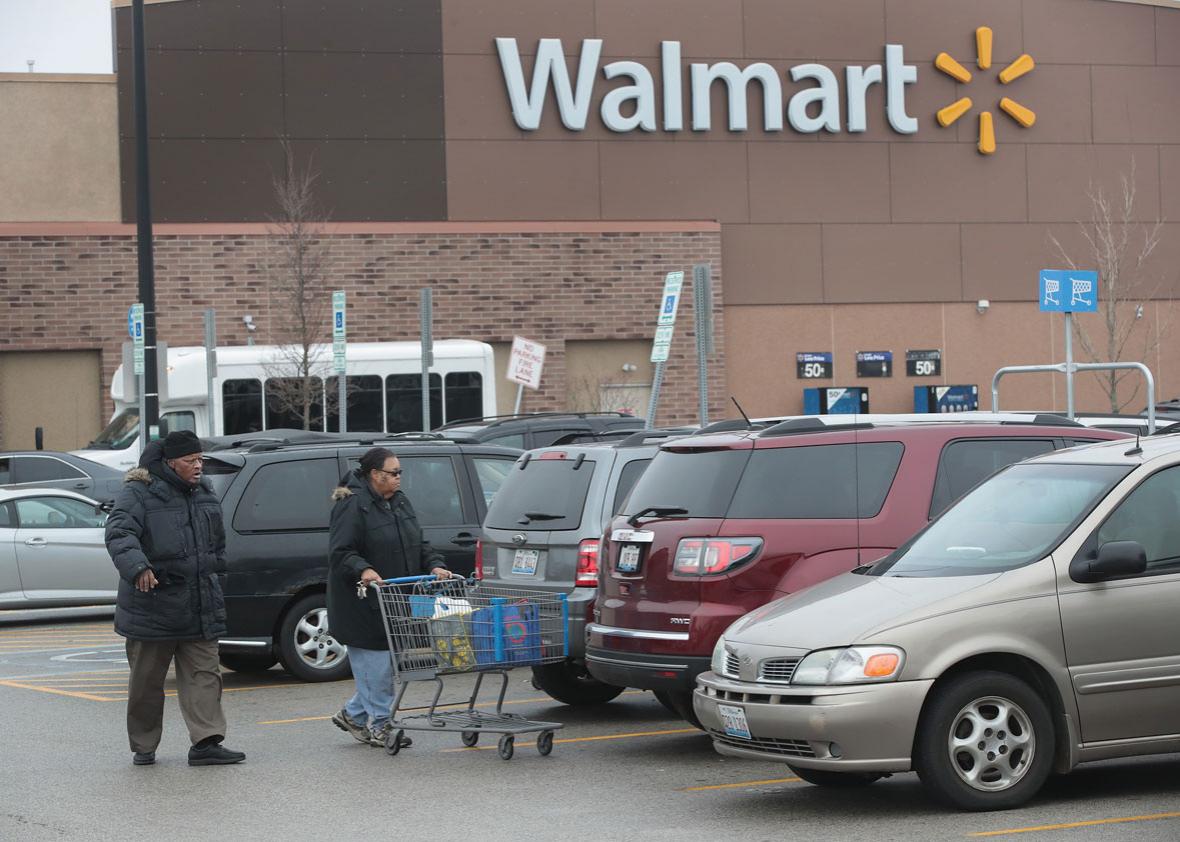The retail industry’s recent decline may have reached a “tipping point.” That was the conclusion of a recent report from the New York Times with potentially far-reaching consequences. Once-bustling shopping malls and department stores are now empty as millions of Americans do their shopping online through businesses that have warehouses but don’t operate storefronts. “This transformation is hollowing out suburban shopping malls, bankrupting longtime brands and leading to staggering job losses,” the Times reports. “More workers in general merchandise stores have been laid off since October, about 89,000 Americans. That is more than all the people employed in the coal industry.”
Retail jobs aren’t good jobs, per se; on average, they pay little, provide few benefits, and are notoriously unstable. But roughly 1 in every 10 Americans works in retail, which means millions rely on the industry for their livelihoods. As the Times notes, “The job losses in retail could have unexpected social and political consequences, as huge numbers of low-wage retail employees become economically unhinged, just as manufacturing workers did in recent decades.”
Despite this ongoing challenge and threat to millions of ordinary Americans, Washington is silent. What makes this even more striking is it comes at a time when politicians—and a multitude of voices in national media—are preoccupied with the prospects of blue-collar whites and the future of the Rust Belt. That contrast exists for several reasons, not the least of which is a simple one: Who does retail work in this country versus who does manufacturing work.
For those in the latter group, mostly white and mostly male, Donald Trump made their anger, anxiety, and identity the centerpiece of his presidential campaign, promising restoration through better “deals” and aggressive action against foreigners and perceived others. “Dying industries will come roaring back to life,” he said in February during his first address to a joint session of Congress. Just weeks before, the president signed legislation repealing rules protecting local waterways from coal mining waste. Surrounded by a group of coal miners, Trump called the regulation “a major threat to your jobs” and said that ending it would save “many thousands American jobs, especially in the mines.”
In terms of attention, these workers punch far above their weight class. They constitute a small portion of the American workforce, and yet, elite journalists devote countless words to their lives and communities, while politicians use them and their priorities as a platform for performing authenticity. For those in and around politics, one’s connection to “real America” is often judged by one’s proximity to these workers and their concerns. Which raises a question: Why them and not those retail workers who face an equally (if not more) precarious future?
One answer is that these jobs are ubiquitous. Retail work is everywhere. And while conditions in this sector are important to the overall economy, they don’t define particular communities. (Even as the decline of retail hits small towns especially hard.) Politically, no one is especially invested in them. Not only are jobs in manufacturing and coal tied to specific places, but they predominate in swing states like Pennsylvania, Michigan, and Ohio, offering a strong incentive for ambitious politicians to pander. Likewise, retail work is concentrated where people live: in cities and suburbs. If the gerrymandering and the Electoral College devalues voters in dense areas of the country, then it does the same for workers in those places too.
Another answer is that these jobs are low-skill and lack the physical risk of mining or heavy manufacturing. And as such we tend, as a society, to give little attention and concern to those positions. We see them as expendable positions of low worth. It’s one reason for the often-hostile reactions to calls for a higher minimum wage. Anyone can operate a cash register, goes the argument, why should we give them a larger paycheck?
There’s one other answer to consider, one that speaks to deep divides in our society. Retail work in malls and shopping centers and department stores is largely work done by women. Of the nearly 6 million people who work in those fields in stores like Sears, Michaels, Target, J.C. Penney, and Payless, close to 60 percent are women. There’s another issue to consider. A substantial portion of these workers—roughly 40 percent across the different kinds of retail—are black, Latino, or Asian American.
The Bureau of Labor Statistics doesn’t disaggregate this data by race and gender, but it’s likely that a large number of those nonwhite workers—if not a majority—are women too. By contrast, heavy manufacturing, industrial, and extraction work is overwhelmingly white and male. What’s more, it’s tied to a particular image of the standalone (and often unionized) worker who can provide for his family on one income. Americans have historically had an almost romantic attachment to the hard-hat worker, usually white, in a way that we don’t to any other profession.
Work is gendered and it is racialized. What work matters is often tied to who performs it. It is no accident that those professions dominated by white men tend to bring the most prestige, respect, and pay, while those dominated by women—and especially women of color—are often ignored, disdained, and undercompensated.
For all of the impersonal economic reasons for the decline of retail, for all the understandable reasons motivating political attention to manufacturing, it’s also the case that this is a story of race and gender. A story of who matters in our society; who deserves our collective concern. And if one thing is true in American history, it’s that white men have always been among those called “deserving,” with other groups struggling to attain that label and the respect it implies, and some—like black women—long stigmatized as inherently unworthy.
The story of our outsize concern for coal and manufacturing, or rather our indifference to the collapse of retail, is inescapably the story of how worth, value, and citizenship are still tied to those traits we can’t control.
